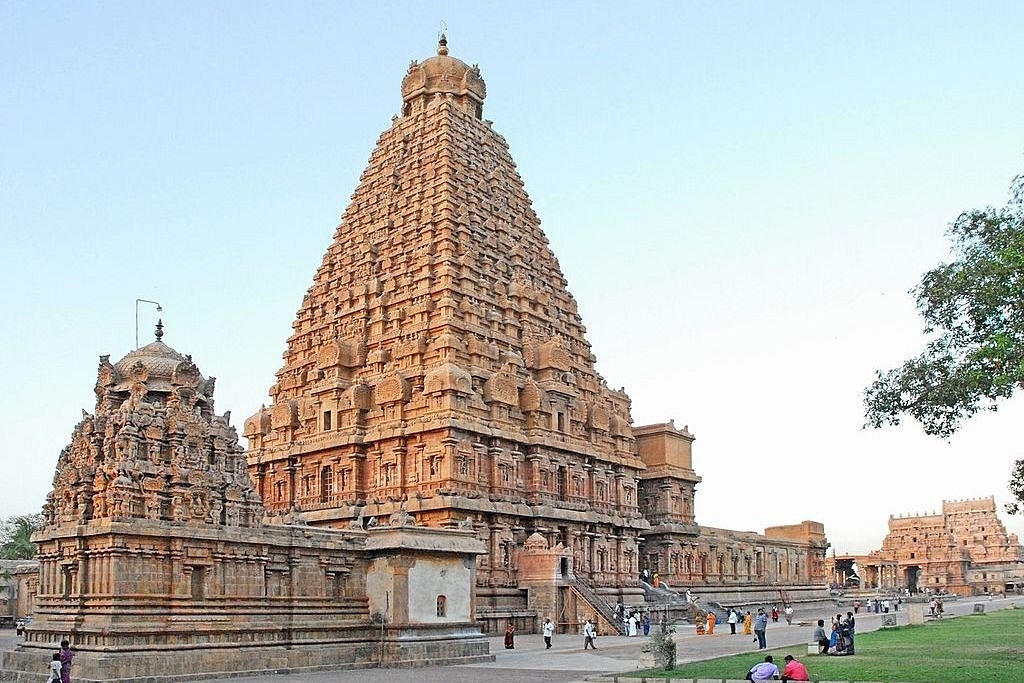News Brief
Should Rich Temples Support Smaller Ones Financially? Madras HC Wants Tamil Nadu Government To Rethink Move
- A two-judge bench of the High Court wondered why the State government wanted to divert funds from temples that had higher income when the latter had allocated Rs 488 crore for such purposes in the Budget.

Thanjavur Brihadeeswara (Jean-Pierre Dalbéra/Wikipedia)
The Madras High Court has asked the Tamil Nadu government to review its decision to divert surplus of temples with higher funds flow to 1,000 small village temples.
A two-judge bench of the High Court, comprising Justices M M Sundresh and R Hemalatha, wondered why the State government wanted to divert funds from temples that had higher income when it had allocated Rs 488 crore for such purposes in the Budget.
The bench was hearing a public interest litigation filed by Rangarajan Narasimhan of Srirangam.
The petitioner had sought the quashing of a government order of 15 May this year that transferred Rs 10 crore surplus funds from 20 temples in the State for renovation work in the small temples whose financial income was unstable.
For the Tamil Nadu government, this is the second setback this week with regards to temple affairs in the State.
On Monday (28 September), the High Court admitted a petition filed by T R Ramesh, president of the Indic Collective and Temple Worshippers Society, that questioned the “illegal presence” of that the State government and the Hindu Religious and Charitable Endowments (HR&CE) department in 45 temples.
These temples include the Srirangam Ranganathaswamy temple, Chennai Mylapore Kapaliswarar temple, the Palani Sri Dhandayudhapani Swamy temple, the Tiruchendur Sri Subramaniaswamy temple, the Madurai Meenakshi Sundareswarar temple and the Tiruvannamalai Sri Arunachaleswarar temple.
In the issue of allocation of money from temples with higher income to small village temples, Justices Sundresh and Hemalatha observed that such schemes cannot be implemented as social welfare schemes of the State government.
The bench questioned the wisdom behind allocating Rs one lakh each for every temple without assessing their needs.
The judges pointed out that some temples might need more than Rs one lakh, while others would require less than Rs 50,000 and wondered how would allocating a fixed amount serve the purpose.
The court asked the HR&CE department to revisit the scheme and identify the temples that require immediate renovation before allocating funds.
Rangarajan argued that the HR&CE Commissioner cannot take such policy decisions since under the HR&CE Act only the temple trustees have the power to allocate any surplus fund.
He also pointed out to the Rs 488 crore allocation and said there was no need for further allocation of funds. He alleged that the HR&CE Department had not even identified the 1,000 small village temples.
On 4 May this year, the Madras High Court had found a Tamil Nadu government order asking temples to donate to the Chief Minister’s Covid Relief fund to be untenable. The order was subsequently withdrawn.
Then, the court found merit in the argument of the counsel of one of the petitioners, T R Ramesh, who argued that the HR&CE Commissioner could not pass a circular under Section 36-B of HRCE Act, 1959 when he was the sanctioning authority.
Section 36-B of HRCE Act, 1959 is on the utilisation of temples' surplus funds for the purpose of feeding the poor (annadhan). This section was introduced by the Tamil Nadu government in 1983 under The Tamil Nadu Act.
Ramesh argued that under Sec 36-B the trustees of temples had to seek the HR&CE Commissioner’s approval for utilising temple funds. In turn, the Commissioner had to publish the request and seek comments from the devotees.
Rangarajan’s arguments are on the same lines, who has also alleged that diversion of affluent temples' funds resulted in draining their wealth. It resulted in interference by donors, who tended to gain control over them and wielded enormous power.
On its part, the HR&CE argued that funds of popular and financially stable temples in the State had never drained and the revenue of these temples was increasing manifold with the passage of time.
Introducing ElectionsHQ + 50 Ground Reports Project
The 2024 elections might seem easy to guess, but there are some important questions that shouldn't be missed.
Do freebies still sway voters? Do people prioritise infrastructure when voting? How will Punjab vote?
The answers to these questions provide great insights into where we, as a country, are headed in the years to come.
Swarajya is starting a project with an aim to do 50 solid ground stories and a smart commentary service on WhatsApp, a one-of-a-kind. We'd love your support during this election season.
Click below to contribute.
Latest